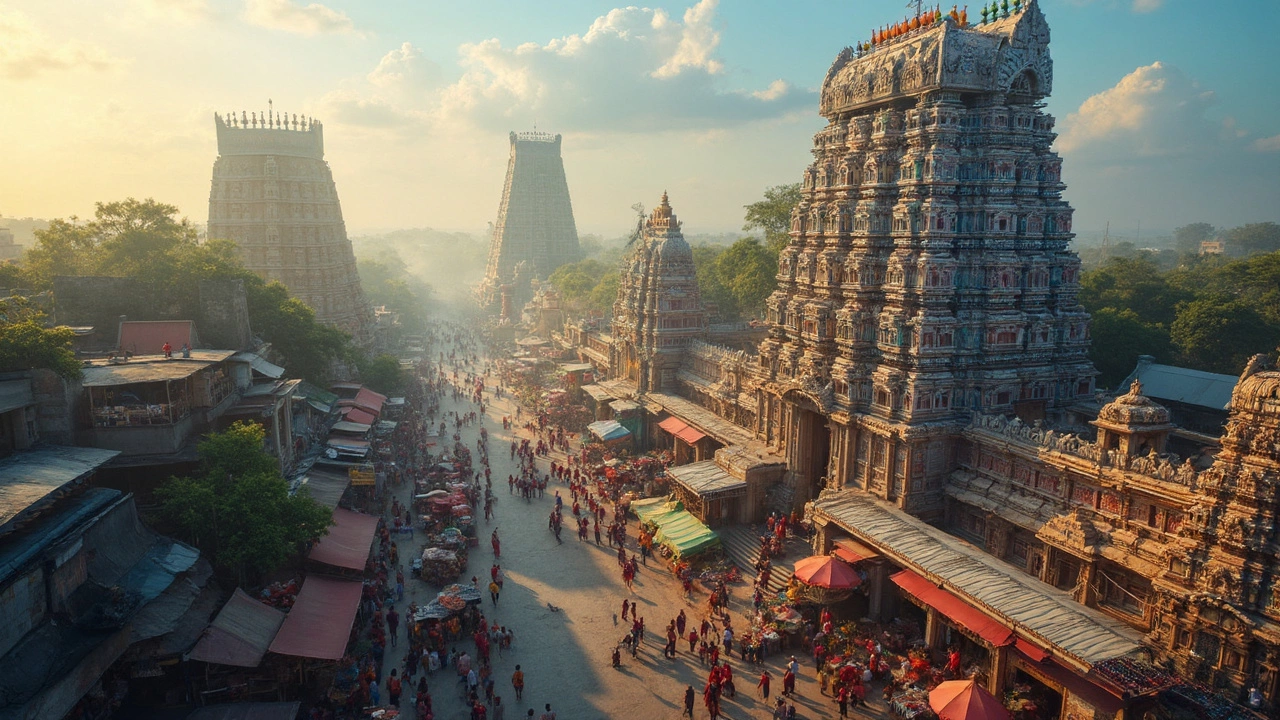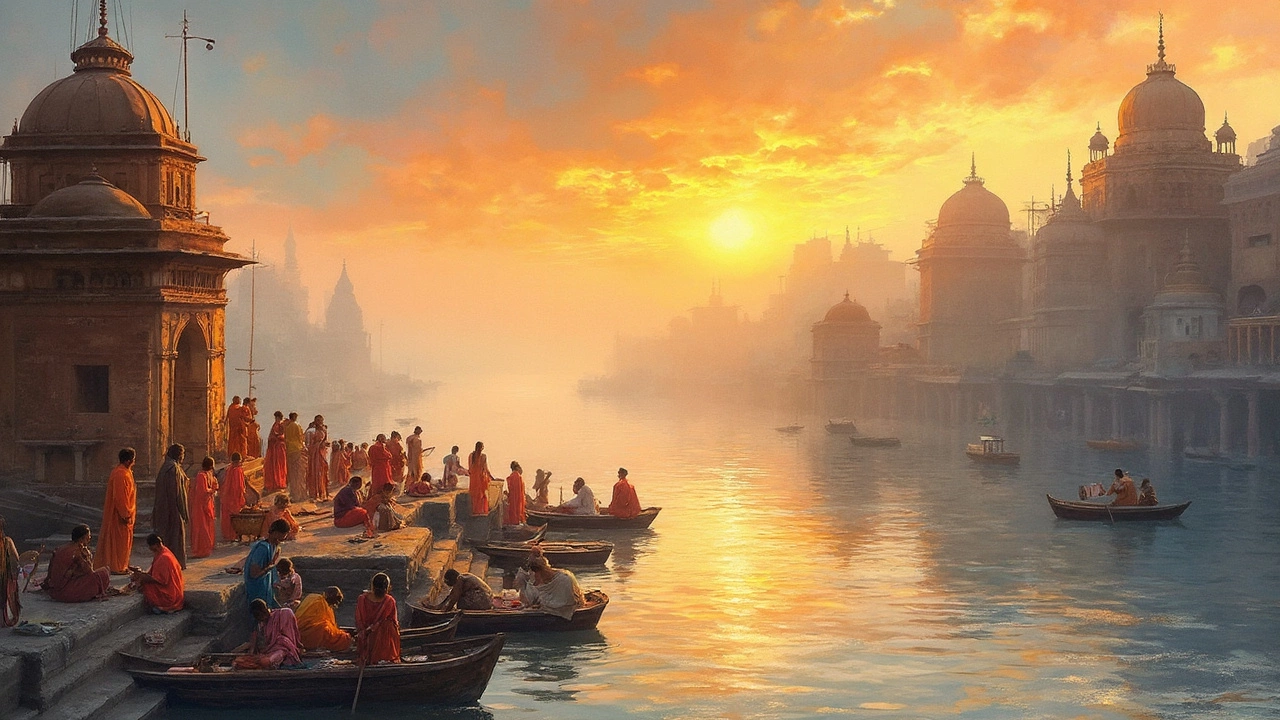Thinking of places where history isn’t just in dusty textbooks? In India, some cities have actually been around for thousands of years and people still live, work, and celebrate in them. If you ever wondered about the oldest cities in the country, it’s not just about grand monuments—it’s about real neighborhoods, everyday life, and traditions that go back further than most countries have even existed.
So, which two cities have stood the test of time the longest? If you guessed Varanasi and Madurai, you’re right on the money. These aren’t just places with a few old temples—they’re living museums where you can walk the same streets as ancient traders and poets did. If you love the idea of soaking up history not just in museums but in real life, you’re in for a treat.
- Ancient Roots: The Timeline
- Varanasi – The Eternal City
- Madurai – Where Myths Still Walk
- What Makes These Cities Stand Out?
- Tips for Your Heritage Trail
Ancient Roots: The Timeline
Ever thought about how old a city can get? In India, we’re talking about cities that have been kicking around since before most of the world even had permanent towns. Let’s break down when Varanasi and Madurai actually got their start.
Varanasi is the kind of place where history gets real. Most historians agree it’s at least 3,000 years old, with some saying it’s even older. Earliest written records put Varanasi on the map around 1200 BCE, though folks have probably been living here a lot longer, judging by the archaeology.
Now, Madurai claims an impressive past too. There’s solid evidence that this city has been inhabited since at least the 3rd century BCE. Literature from as far back as 2,000 years ago mentions Madurai by name, connecting it to major trade and culture in ancient South India. That means we’re looking at more than 2,000 years of non-stop urban life here.
Here’s a quick look at the big dates that make these cities true veterans:
| City | Earliest Known Record | Estimated Age | Main Early Source |
|---|---|---|---|
| Varanasi | 1200 BCE | Over 3,000 Years | Rigveda, Archaeological finds |
| Madurai | 3rd Century BCE | 2,300+ Years | Sangam literature, Greek-Roman accounts |
Want to know a cool fact? Greek historian Megasthenes wrote about Indian cities around 300 BCE, and both Varanasi and Madurai show up in ancient traveler’s accounts. These cities didn’t just hang around—they were famous enough to get noticed abroad when the rest of the world was still figuring itself out. Talk about standing the test of time.
Varanasi – The Eternal City
If you’re hunting for a city that never lost its place in time, Varanasi has been at the top of the list for ages. People call it the oldest living city in India—and some even argue it’s one of the oldest in the whole world. Archaeologists have traced its roots back to around 1200 BCE, though local legends claim it’s been alive way longer. What’s wild is that despite all those years, Varanasi still buzzes with life 24/7. Pilgrims, tourists, hustlers, scholars, and everyday folks all share the same crowded lanes along the river Ganga.
Varanasi pops up everywhere: ancient scriptures like the Rigveda, Buddhist stories, and even in Megasthenes’ records when he visited India from Greece. The city has been a key religious and cultural hub for Hindus, Buddhists, and Jains for centuries.
| Fact | Detail |
|---|---|
| Location | Uttar Pradesh, India |
| Age (approx.) | Over 3,200 years |
| Main River | Ganga (Ganges) |
| UNESCO Status | On Tentative List for World Heritage Sites |
What makes ‘the oldest city India’ special isn’t just the ancient buildings. On any given day, you can watch sunrise rituals, take boat rides, and witness the famous Ganga Aarti—an evening ceremony by the water with lamps and chanting. Locals still use ghats (riverfront steps) for rituals just like their ancestors did.
Here are some practical tips if you plan a visit:
- Try arriving at the Dashashwamedh Ghat before sunrise for a quieter start.
- Be ready for winding alleys—you’ll want comfy shoes and a curious mindset.
- If you’re not a fan of crowds, avoid the big festival days like Dev Deepawali and Shivaratri.
- You can book guided walks for a deep dive into hidden shrines and markets. Local guides often know quirky stories you won’t read online.
Fun fact: The city’s universities have produced some of India’s biggest thinkers. Banaras Hindu University alone has nearly 30,000 students today—proof that learning has deep roots here.

Madurai – Where Myths Still Walk
Madurai isn’t just another old Indian city; it’s like flipping through a living storybook. The city has roots tracing back over 2,500 years, making it one of the oldest urban centers not just in India, but across Asia. You’ll find Madurai mentioned in ancient Tamil texts and Roman writings—proof that this place was a big deal long before modern borders even existed.
The real heartbeat of Madurai? That’s the Meenakshi Amman Temple. This massive temple complex isn’t just a spiritual hub—more than 20,000 people visit on a busy day. The temple dates back to the 6th century BCE, rebuilt and expanded by various dynasties, including the famous Nayaks, who gave it the towering gopurams it’s known for today. Locals believe the city was built after a drop of divine nectar fell on it, which even shows in its name—Madurai comes from 'madhuram,' meaning sweetness.
If you dig stats, here are a few that show Madurai’s long-standing importance:
| Detail | Fact |
|---|---|
| Estimated Established | Before 5th Century BCE |
| Population (2024) | ~1.8 Million |
| Main Attraction | Meenakshi Temple |
| Annual Pilgrims (Temple) | ~15 Million |
But it’s not just about temples. Madurai has always been a buzzing marketplace, trading everything from spices to cloth, way back since the time of the Pandya kings. It was already known to Greeks and Romans—archeologists found Roman coins here, which is wild to think about. Street markets like Puthu Mandapam are packed with tailors and flower sellers. Try picking up some jasmine flowers—they come from Madurai’s outskirts and smell incredible.
Events? The Chithirai Festival is a mind-blower, pulling crowds in the hundreds of thousands. There’s also the local food—jigarthanda (a chilled dessert drink), parotta, and spicy curries. Finding an old-school eatery is easy; look for a bustling mess or corner shop where the locals eat.
Madurai stands out because it’s not frozen in its past. People here genuinely keep ancient traditions alive. If you want to feel the pulse of a city where myths really do shape everyday life, Madurai is a stop you shouldn’t skip—right up there with oldest city India legends.
What Makes These Cities Stand Out?
If you want to know why Varanasi and Madurai are on every serious traveler’s checklist, it’s not just because they're old. It’s about what’s still happening there today. These cities are packed with energy, rituals, and surprises you won’t get anywhere else in India—maybe even the world.
Let’s break down what makes them truly special:
- oldest city India alert: Varanasi sits right by the Ganges and has been lived in for over 3,500 years, according to most archaeologists. Madurai isn’t far behind, with records going back over 2,500 years.
- Varanasi’s ghats (the famous steps down to the river) see more than 80,000 visitors and pilgrims daily—many just to witness the evening Ganga Aarti ceremony. It’s not just a light show; it’s a deeply rooted ritual still practiced every single night.
- Madurai’s Meenakshi Temple is a magnet for both locals and tourists. It’s not just a monument—it gets about 15,000 visits per day, scaling up to 25,000 on Fridays, according to the temple trust’s records.
- Both cities are still strong centers for traditional arts. Varanasi is famous for silk weaving and classical music, while Madurai takes pride in its jasmine flowers and unique temple festivals.
- They didn’t freeze in time. Both are busy, noisy, modern places with universities, businesses, and youth scenes, right alongside their ancient roots.
If you want some quick facts and numbers, here’s a small table:
| City | Estimated Age | Daily Visitors (main attraction) | Keepsakes |
|---|---|---|---|
| Varanasi | ~3,500 years | 80,000+ (ghats) | Banarasi silk, classical music |
| Madurai | ~2,500 years | 15,000–25,000 (Meenakshi Temple) | Jasmine flowers, temple jewelry |
One last thing: Both cities hosted important visitors over the centuries—from Buddha and Mahavir to ancient Greek and Roman traders. So, when you walk around there, you’re walking the same ground as world-changers once did. That’s pretty hard to beat.

Tips for Your Heritage Trail
Planning a visit to the oldest city in India—or make that the two oldest—can be a lot more fun when you’ve got a game plan. Walking through Varanasi and Madurai means you’re surrounded by busy streets, centuries-old rituals, and seriously unique food. To make the most out of your trip, here’s what you should keep in mind:
- Oldest city India is a keyword worth remembering because that’s what makes these places special. Ask your guides or locals questions about what keeps the city’s vibe going for so long—often you’ll discover cool stories that don’t show up on Google.
- Hire a local guide for at least one day. In Varanasi, a guide can explain the Ganga Aarti at Dashashwamedh Ghat in a way that makes you appreciate every flame and chant. In Madurai, you’ll hear why people flock to the Meenakshi Temple at sunrise.
- If you’re into food, avoid touristy restaurants. Varanasi’s kachori-sabzi and Madurai’s jigarthanda are worth hunting down at tiny stalls. Early mornings are best—less crowd, and the fresh air makes everything taste better.
- Watch out for festival dates. Karthigai Deepam in Madurai and Dev Deepawali in Varanasi transform these cities. The crowds are wild, but so is the energy. Accommodations can fill up quick, so book early.
- Dress simply and respectfully, especially if entering temples or attending rituals. Both cities get hot, especially from March to June, so pack light cotton clothes and always carry drinking water.
Here’s a quick snapshot of the best times and budget tips for each city:
| City | Best Season to Visit | Typical Budget Stay per Night (INR) | Unmissable Event |
|---|---|---|---|
| Varanasi | October–March | ₹800–₹2500 | Dev Deepawali |
| Madurai | November–February | ₹700–₹2000 | Karthigai Deepam |
Both cities can get overwhelming if you’re not used to crowds and noise. Try wandering the quiet back alleys or ghats early in the morning—it’s the best way to feel the heartbeat of the city. And don’t forget your camera; you’ll want to remember every moment.
